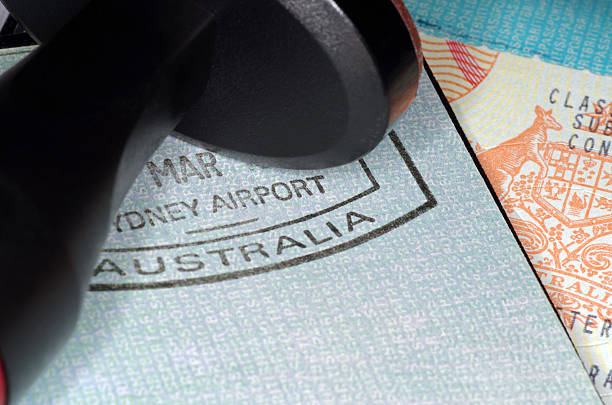Certain introductory sections under the Migration Act (1958) discuss the definitions of relationships and family members. In this article, we will outline some of these sections in relation to relationships and family members.
Section 5CA: Child of a Person
S5CA states without limiting who is child of person, each of the following is a child of person:
- someone who is a child of the person within the meaning of the Family Law Act (1975). This is other than someone who is an adopted child of the person within the meaning of that Act);
- someone who is an adopted child of the person within the meaning of this Act.
Moreover, the regulations may provide that, for the purposes of this Act, a person specified by the regulations is not the child of a person specified by the regulations in circumstances in which the person would (apart from this subsection).
Lastly, subsection (3) states that subsection (2) and regulations made for the purposes of that subsection, have effect whether the person specified as not being a child of another person would, apart from that subsection and those regulations, be the child of the other person because of subsection (1) or otherwise.

Section 5CB: De Facto Partner
Section 5CB on relationships and family members and the Migration Act is on de facto partner. Subsection (1) states that a person is the de facto partner of another person (whether of the same sex or different sex) if under Subsection (2) below the person is in a de facto relationship with another person.
Subsection (2) states that a person is in a de facto relationship with another person if they are not married to each other but:
- a) they have a mutual commitment to a shared life to the exclusion of all others; and
- b) the relationship between them is genuine and continuing; and
- c) they:
- live together; or
- do not live separately and apart on a permanent basis; and
- d) they are not related by family.
Moreover, subsection (3) states that the regulation may make provision in relation to the determination of whether one or more of the conditions in paragraphs (2)(a), (b), (c) and (d) exist.
Furthermore, the regulations may make different provision in relation to the determination for different purposes whether one or more of those conditions exist.
Lastly, subsection (4), states that for the purposes of paragraph 2 (d), 2 persons are related by family if:
- one is the child (including an adopted child) of the other, or
- one is another descendant of the other (even if the relationship between them is traced through an adoptive parent); or
- they have a parent in common (who may be an adoptive parent of either or both of them).
Section 5D: Limiting the Types of Identity Tests That Authorised Officers May Carry Out
This Section states that the Minister, Secretary or Australian Border Force Commissioner, may, in an instrument authorising an officer as an authorised officer for the purposes of carrying out identification tests under this Act, specify the types of identification tests that the authorised officer may carry out.
Moreover, subsection (2) states that such an officer is not an authorised officer in relation to carrying out an identification test that is not of a type so specified. Identification tests is any test that is carried out to obtain personal identifiers.
Section 5E: Meaning of Purported Privative Clause Decision
According to this Section, a purported privative clause decision means a decision made, proposed to be made, or required to be made under this Act, that would be a privative clause decision if there were not:
- a failure to exercise jurisdiction; or
- an excess of jurisdiction;
in the making of the decision.
Moreover, in this section, decision includes anything listed in subsection 474 (2).
Section 5F: Relationships and Family Members – Spouse
A person is the spouse of another person (whether of the same-sex or different sex) if, under subsection 2 (see below), the 2 persons are in a married relationship.
Subsection (2) states that persons are in a married relationship, if:
- a) they are married to each other under a marriage that is valid for the purposes of this Act; and
- b) they have a mutual commitment to a shared life as a married couple to the exclusion of all others; and
- c) the relationship between them is genuine and continuing; and
- d) they:
- live together; or
- do not live separately and apart on a permanent basis.
Lastly subsection (3) states that the regulations may make provision in relation to the determination of whether one or more of the conditions in paras 2)(a), (b), (c) and (d) exist.
The regulations may make different provision in relation to the determination for different purposes whether one or more of those conditions exist.
Note that Section (12) also affects the determination of whether the condition in paras (2)(a) of this section exists.

Section 5G: Relationships and Family Members
According to s5G, for the purposes of this Act, if one person is the child of another person because of the definition of child in s5CA, relationships traced to or through that person are to be determined on the basis that the person is the child of the other person.
For the purposes of this Act, the members of the person’s family and relatives include the following:
- a) a de facto partner of the person;
- b) someone who is child of person, or of whom person is the child, because of Section 5CA definition of child
- c) anyone else who would be a member of the person’s family or relative of the person if someone mentioned in paras (a) or (b) is taken to be a member of the person’s family or relative of the person.
This does not limit who is a member of the person’s family or relative.
Seeking Advice from Migration Lawyers
Migration lawyers are experts in all matters related to migration and Australian visas. Our team can help you lodge applications for permanent visas and temporary visas. We can also help with skilled visas for permanent residency as well as Australian citizenship.
For more information, reach out to our team today.
